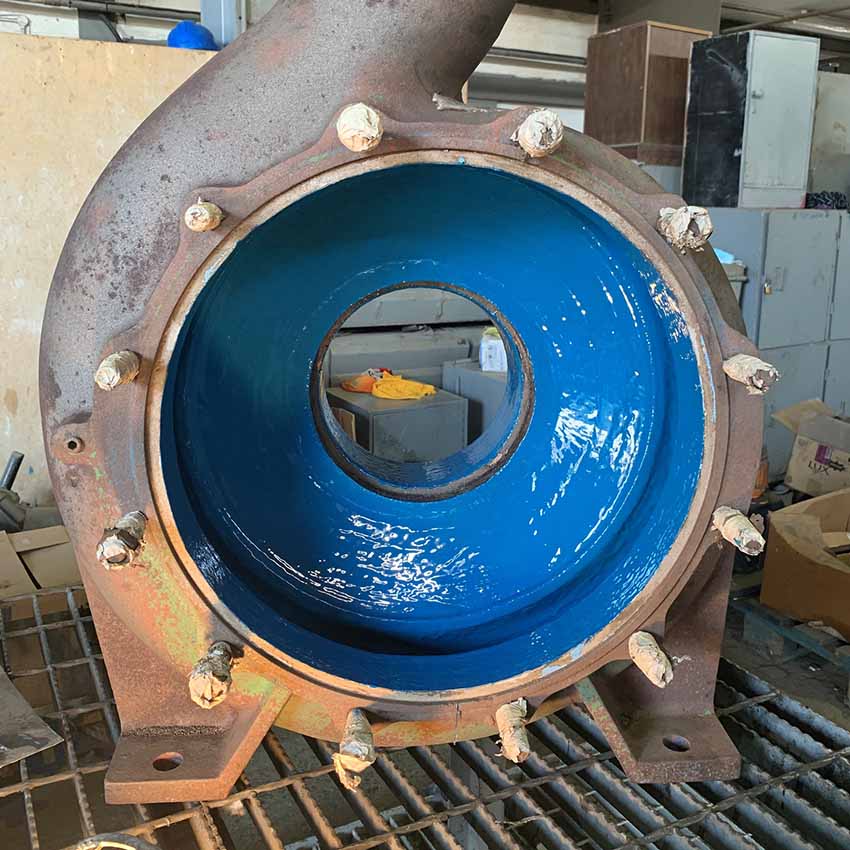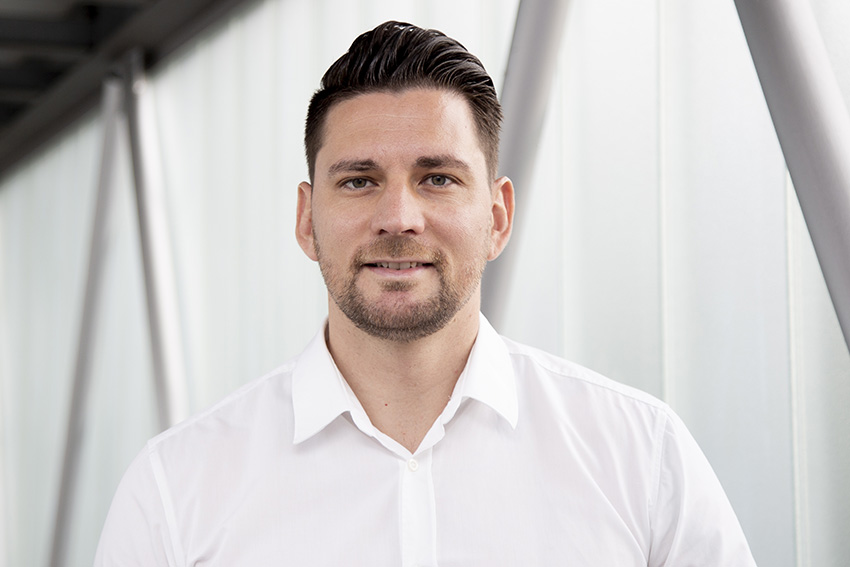Plastic Metal produced by WEICON has been around for almost as long as the company itself. While the versatile material has been long established and appreciated among experts with an industrial background, it still raises many questions at first, especially among laymen: “A metal made of plastic, how is that supposed to work? What is it good for?”. Looking for answers, we talked to Hannes Kilian.
Interview with Plastic Metal expert Hannes Kilian.
Hannes, would you like to briefly introduce yourself and your position at WEICON?
Hannes Kilian: My name is Hannes Kilian and I have been working for WEICON as a Business Developer in Dubai since the beginning of 2020.
What exactly are your tasks?
H.K: I receive calls from WEICON sales representatives all over the world on a daily basis, who discuss potential Plastic Metal applications for their customers with me. My job is to support them in choosing the right products for the intended repair and in calculating how much material is needed. Here in Dubai, I also visit customers myself, advise them on the potential uses of Plastic Metal in their companies, and supervise their applications on site. So in these cases, I’m not just responsible for providing the theoretical background, but I’m also involved in hands-on projects. And I can tell you one thing: Plastic Metal definitely sticks very well, but unfortunately, also to my good clothes. But that’s part of my job!
My daily work revolves almost entirely around Plastic Metal
So, we could call you a real “Plastic Metal expert”?
H.K: Yeah, I suppose so. My daily work revolves almost entirely around the use of Plastic Metal. I’ve been dealing with Plastic Metal for ages, partly due to a previous self-employment, extensive product training and different tests. This has allowed me to a acquire a high level of expert knowledge.

In very general terms, what is Plastic Metal?
Plastic Metal is a material for reconditioning damaged steel plates, pipes, and many other wear parts used in industry. Depending on the type of Plastic Metal, it can be a steel-, aluminium-, or ceramic-filled adhesive. WEICON Plastic Metal is a 2-component epoxy resin system, which means that it consists of a resin component and a hardener component. After mixing both components, Plastic Metal hardens by an exothermic reaction and forms an abrasion-resistant surface.
Plastic Metal can do a lot
In which branches and for which applications is Plastic Metal used?
H.K: Generally, you can apply Plastic Metal in all areas of industry. From mechanical engineering to marine and inland shipping to the automotive industry – Plastic Metal can do a lot! Heavily stressed and worn industrial parts can be reconditioned and repaired. For example, it is used to coat, seal, and repair industrial pumps, pipes, tanks, or machine parts. A Plastic Metal coating provides very good wear protection to industrial parts against future stresses.
Is there a Plastic Metal “all-rounder” that can be used for all applications?
H.K: No, there are several product variations for Plastic Metal. The products vary in their viscosities and filling materials. They also have different resistances to temperature and chemicals. When choosing the right product, you have to take the customer’s requirements and the area of application into consideration. If the material has to be processed overhead, for example, only a Plastic Metal type with a high viscosity can be used. This does not drip or run. Secondly, you have to prevent that certain substances react with each other. For example, a steel-filled epoxy cannot be applied to a stainless-steel surface, as it would cause bimetallic corrosion. The Plastic Metal would lose its adhesive strength in this case, too. That’s why there are different types of Plastic Metal to meet the individual requirements of different product applications.
In terms of cost efficiency and effort, the repair with Plastic Metal clearly beats buying new components

What are the advantages of Plastic Metal?
H.K: When a part breaks, you have to choose between buying a new one or repairing it. If you want to replace something, then the new part must first be produced, which takes a lot of time and resources. Casting a new pump, for example, can take up to two years. And sometimes, it’s simply not possible to replace worn out parts – for example, if they are permanently embedded in concrete. So a replacement can quickly become very complex and expensive. This is exactly where the biggest advantage of Plastic Metal comes in: Repairing and recoating old wear parts with Plastic Metal gives them new life. For example, a steel plate that is heavily stressed by natural abrasion does not have to be replaced again and again, but can be recoated with Plastic Metal on a regular basis. In terms of cost efficiency and effort, the repair with Plastic Metal clearly beats buying new components.
Are there other repair methods that can keep up with Plastic Metal?
H.K: Actually, for the applications I mentioned before, there are no comparable repair methods that come close to what Plastic Metal can do. Broken steel parts, for example, could technically also be repaired by welding. Practically, however, the use of thermal energy is often problematic or too dangerous in certain industries. For instance, welding can cause distortion, which means that the components would no longer fit together properly. Castings, by the way, cannot be welded at all or at least it’s very difficult. That is where Plastic Metal comes in, as it enables a “cold” repair – even in sensitive industrial areas. You won’t find that in any other repair method.
How durable are repairs with Plastic Metal?
H.K: Weather influences, temperature fluctuations, exposure to various stresses, and contact to different substances all play a part in that. That is why the durability of a repair with Plastic Metal always depends on the individual circumstances. However, usually, the repairs last for a period of three to ten years, in some cases even 15 to 20 years. Because WEICON uses two-layer systems in the Plastic Metal sector, coatings can always be repaired in time, as soon as the first layer has started to wear off. Instead of renewing the complete Plastic Metal coating after six years, for example, only the top layer can be replaced after one or two years. This keeps costs and effort low and makes the repair durable.
Products require explanation
What is the greatest challenge in your job?
H.K: Often, customers have never heard of Plastic Metal before. In these cases, it is my job to introduce them to the material and the many advantages of Plastic Metal repairs. Then I need to work out the best repair option for the customer’s application and to recommend suitable products. That’s not always easy, as many of the products require a lot of explanation.

So, does that mean the application of Plastic Metal can also go really wrong?
H.K: Absolutely. As good as it can go, it can also go really wrong. It is important to plan the application in detail with the customer beforehand. That means I have to know in advance exactly what temperatures, chemicals and weather conditions the repaired part will be exposed to. That is the only way for me to be able to choose the right Plastic Metal for the application and to also advise our customers on the appropriate surface pre-treatment, which alone accounts for 90 percent of whether the application is successful. So, extensive communication and planning with the customer are very important for the success of the Plastic Metal application.

